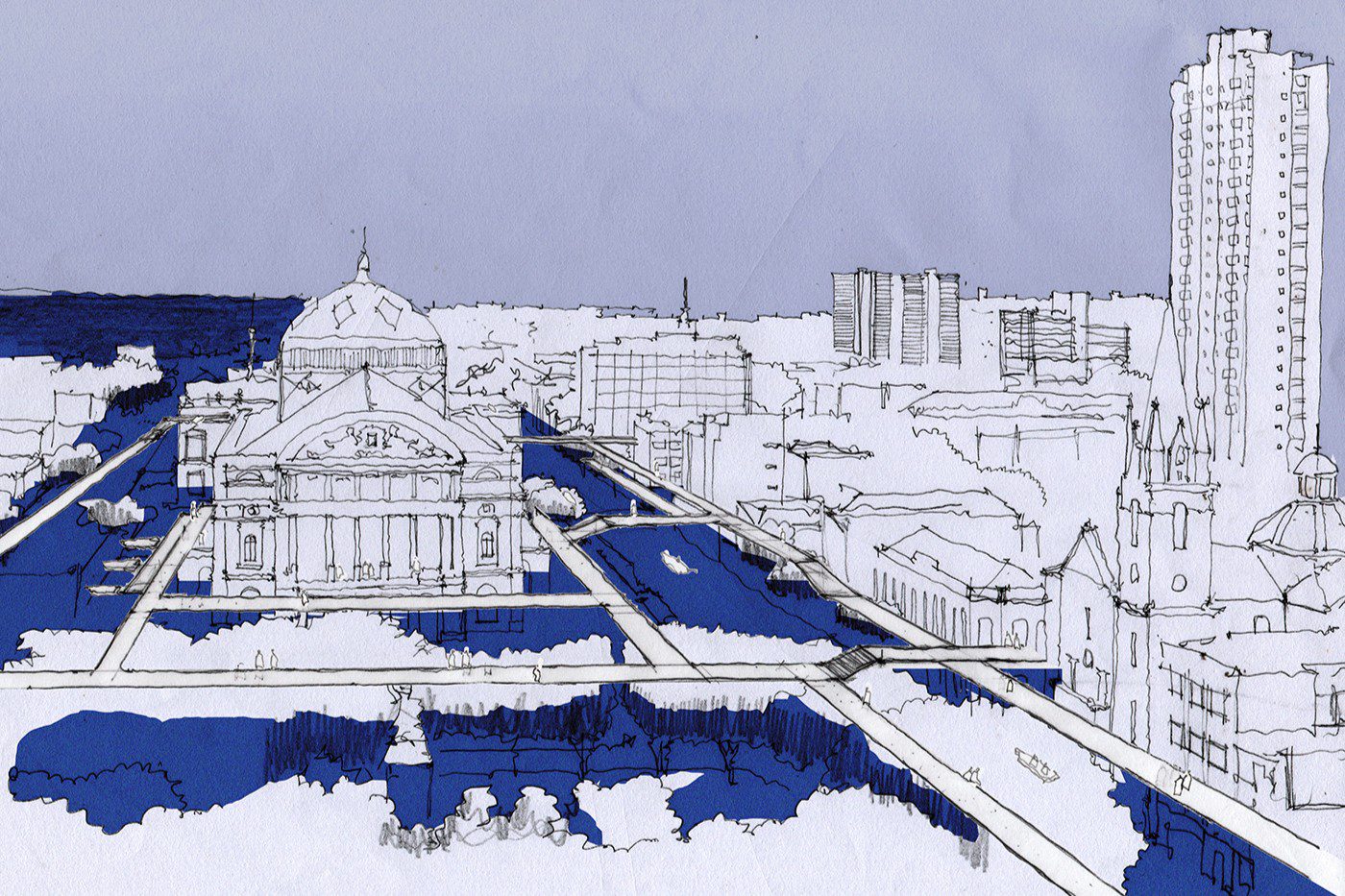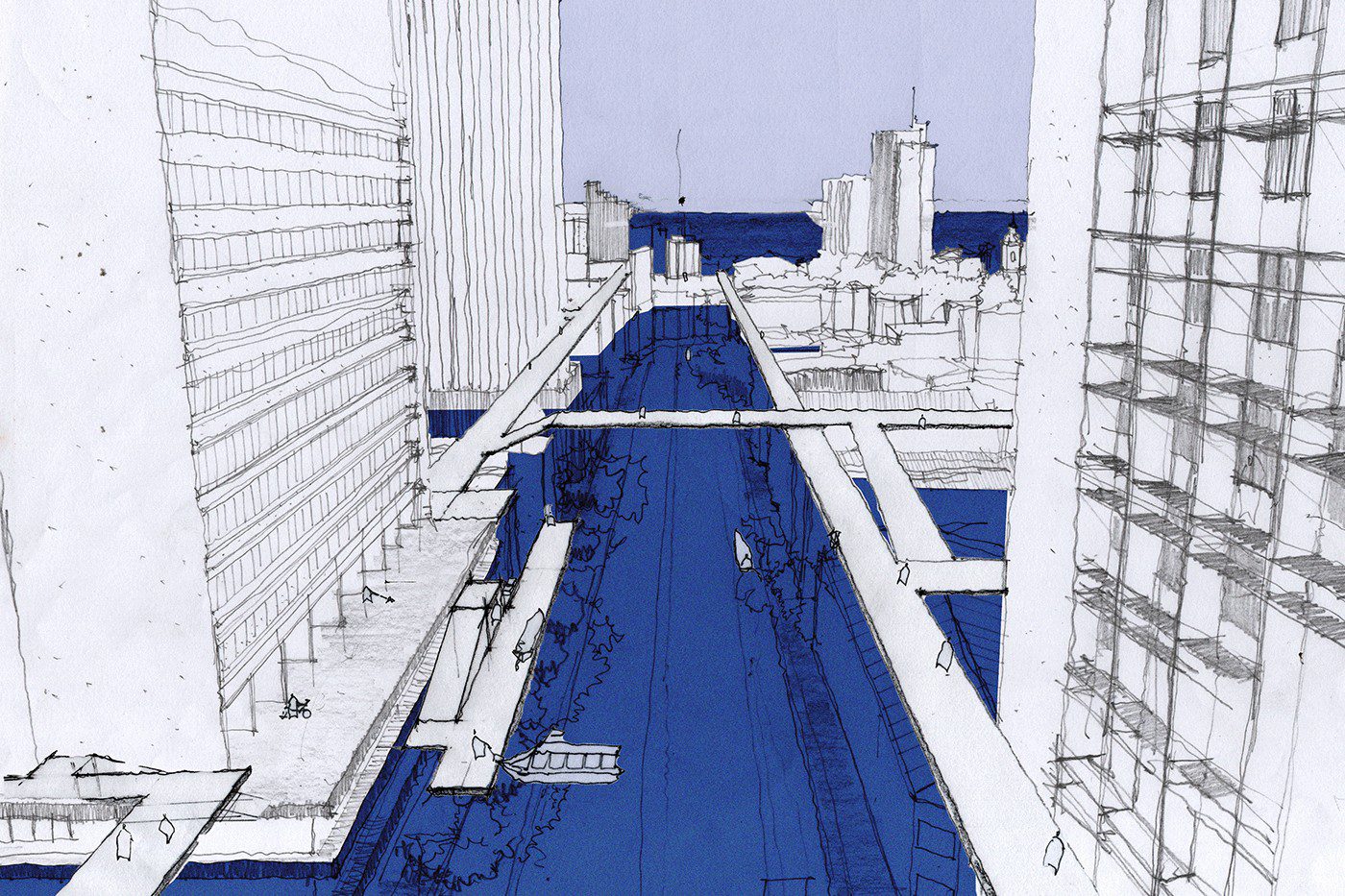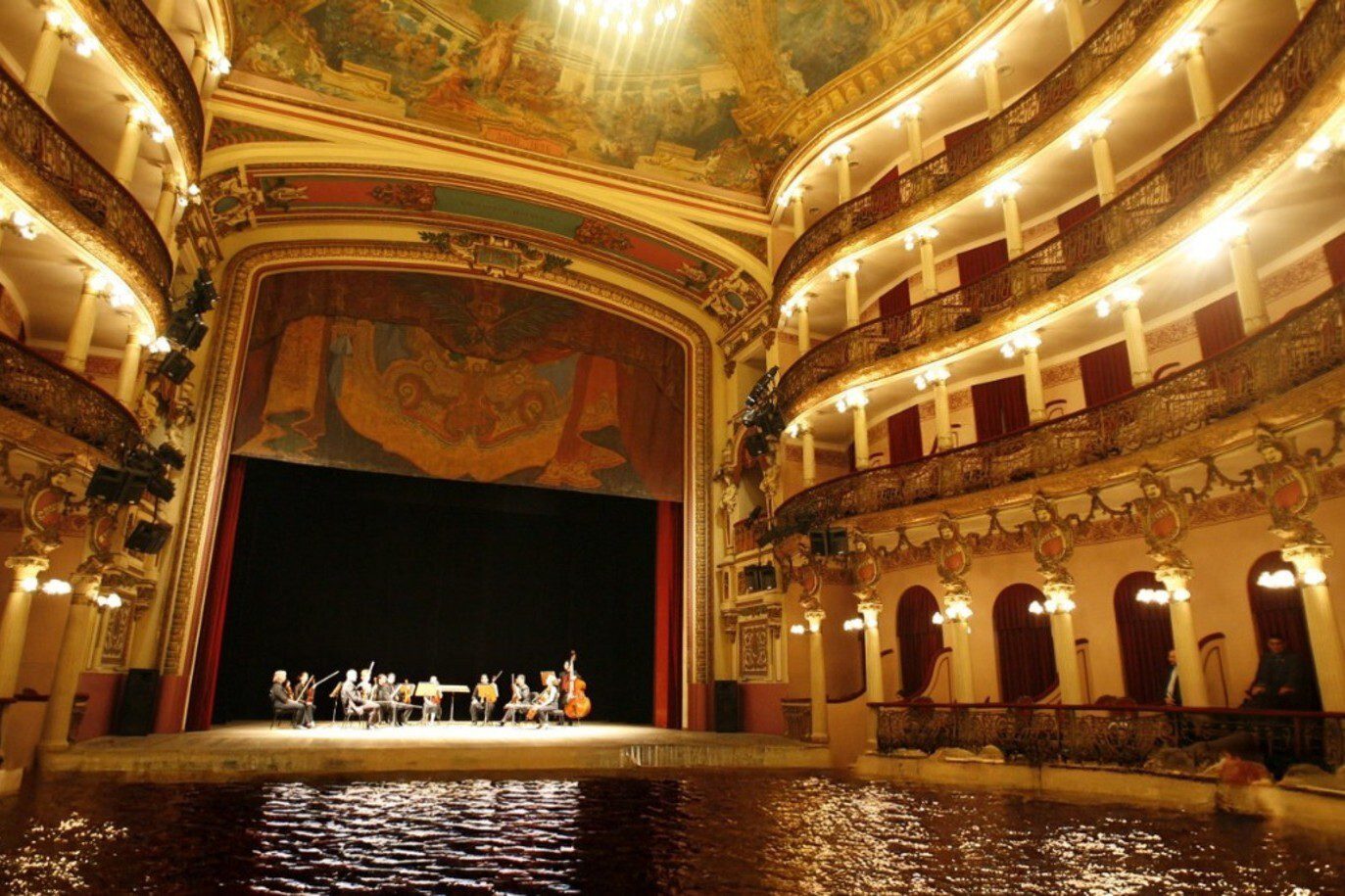Project implementation: Brazil
Project development: Brazil
Students: Christian Almeida Campos do Nascimento, Clara Albertini de Queiroz and Felipe de Souza Noto
"The law of the river never ceases to impose itself on the lives of men. It is the empire of water. [...] The river tells man what he must do. And man follows the river's order. If he doesn't, he succumbs."
Thiago de Mello
The cities of the Pan-Amazon region have a visceral relationship with water. Many have their daily lives marked by the rivers' flooding—emblematic cases include Anamã (AM) and Afuá (PA), nicknamed the "Venice of the Amazon" and "Venice of Marajoara."
Its metropolises, however, like the large Brazilian centers, in the process of modernization denied this initial relationship: streams were suffocated and buried in the name of “development”.
This essay proposes a revisitation of this rupture between city and water, imagining, in a radical and utopian way, the confrontation of urbanity with its natural condition taken to the extreme: how would Amazonian cities adapt to the advancing waters? What are the consequences of this transformation? What mitigation strategies would be possible in the face of a new order imposed by nature?
The case study emerges almost naturally: Manaus, a metropolis of contrasts, which grew with its back to the forest and rivers. The Remédios, Naus, and Espírito Santo streams, in the central region, were buried by modernization, but they return during periods of severe flooding, reclaiming channels that were denied them.
The narrative begins at the old Igarapé do Espírito Santo — today Avenida Eduardo Ribeiro —, which flows into the vicinity of the Teatro Amazonas, an icon of the tropical Belle Époque and the epicenter of our speculation.
The Negro River is monitored by the Port of Manaus, whose gauge records annual fluctuations of between 9 and 12 meters. The average level is +22.5 m; in 2021, the highest flood in history reached +30.02 m. Researchers estimate that a level of +35.0 m, given climate intensification, is plausible in the near future.
We've taken a radical approach: we envision Manaus at an elevation of +50.0 m—the "River Manaus." In this scenario, urban morphology is reorganized based on a lexicon already familiar from riverside cities, such as Afuá, Anamã, or the ancient floating city of Manaus. Traditional construction techniques—walkways, piers, suspended streets, and platforms—become the matrix of new urban spatialities, interweaving permanence and movement amidst the waters.
Given the complexity of the metropolis, the exercise focuses on three situations radiating from the Amazonas Theater: (a) the Cidade de Manaus Building; (b) the houses on 10 de Julho Street; (c) the Amazonas Theater itself. Three scales, three ways of considering the adaptation of the pre-existing urban landscape to the new conditions. We work with two elevations: +47.5 m, as the new "normal" level, and +50.0 m, as the extreme flood and design level.
Utopia or dystopia? Perhaps both: dystopian, for taking an extreme event as its trigger; utopian, for seeing the river not as an obstacle but as an ordering principle of urban life. By accepting water as a condition rather than a threat, a fertile field opens up for imagining other spatialities, new forms of coexistence and permanence.
The “Fluvial Manaus” envisioned here is not a project, but speculation: an invitation to think about the urban in its primary relationship with the environment, recovering silenced memories and anticipating possible futures.




